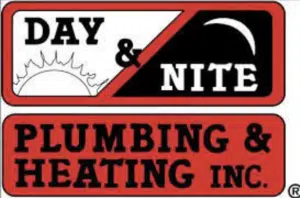You know what they say about P-traps…every homeowner has one…or two…or three…or more! P-traps are so common, yet so misunderstood, and so necessary. Let’s look at where they are, what they do, and how we can maintain them.
Every single fixture in a plumbing system has some sort of P-trap. And even though there’s a certain artistry to its curvy shape, it’s not just an adornment. It performs a special function for the fixture it’s connected to or ‘serving’. The P-traps we’re most familiar with are the ones that are easily accessible, and commonly found just below our kitchen and bathroom sinks.
There are other P-traps in our homes that are just as common, but they’re out of sight and we don’t really give them much thought. Those serve our washing machines, bathtubs, and showers.
Regardless of which fixture they’re connected to, all P-traps have a form and function that lives up to their name. They are designed to ‘trap’ water in them by the way they are shaped (like a capital ‘P’ laying on its side), in order to keep the bad smelling sewer gasses and fumes from coming into the room. In the past, traps came in other shapes, like ‘S’ traps, but they are no longer legal.
Not only is the trapped water in a ‘P-trap there to keep sewer gasses from floating into the room, the ‘P’ shape of the trap also ‘traps’ many things that commonly go down our drains, like hair, or anything heavy that might fall into a sink; like a ring. If that happens on a kitchen sink or a bathroom sink, it’s generally a simple thing to put a pan or small bucket under the trap, loosen the large nuts, and then slide the P-trap apart and remove it to clean it.
I normally do not recommend trying to use a small hand-crank snake to go down a sink drain to clear a P Trap. The traps under sinks are not made sturdy enough to stand up to a cable type snake being pushed through them, and they will likely break apart or become disconnected.
If the P-trap that needs clearing is on something like a tub or shower or floor drain, of course those traps are hard to get to and are sometimes completely inaccessible. (Like when they’re below a concrete slab) In those cases, snaking with a small hand snake may be the best alternative.
Sometimes, if snaking a P-trap, or disassembling and cleaning it isn’t a good option, a small household wet-vacuum might pull everything up out of the trap and clear it pretty effectively. It’s often worth a try. If you do use a wet-vacuum, be sure to run some water afterwards so the water ‘seal’ is re-established in the trap.
If a plumbing fixture isn’t used for several months, then the P-trap isn’t used, and the water that is usually standing in them will often dry out. This will allow sewer gasses downstream to float up into the room. Be sure to run water in all your fixtures every few months, or you’ll be invaded by bad smells.
Whether they’re convenient, or not, P-traps on our plumbing systems are a reality and a necessity. In most cases you can easily maintain and clean them yourself. But if you find yourself in fix with your fixture, we know of a very good and reliable plumbing company. Just saying.
 Since 1954, Day & Nite Plumbing & Heating, a family owned and operated company, has been meeting the plumbing, heating, and air-conditioning needs of homeowners and businesses in Seattle and the surrounding areas. Whether you have a plumbing emergency, or you need a heating and cooling home comfort system, “Do it Right! Call them anytime “Day or Nite.” Be sure to browse here for in-depth answers to homeowner’s top plumbing and heating questions, or send your own questions directly to the expert.
Since 1954, Day & Nite Plumbing & Heating, a family owned and operated company, has been meeting the plumbing, heating, and air-conditioning needs of homeowners and businesses in Seattle and the surrounding areas. Whether you have a plumbing emergency, or you need a heating and cooling home comfort system, “Do it Right! Call them anytime “Day or Nite.” Be sure to browse here for in-depth answers to homeowner’s top plumbing and heating questions, or send your own questions directly to the expert.











